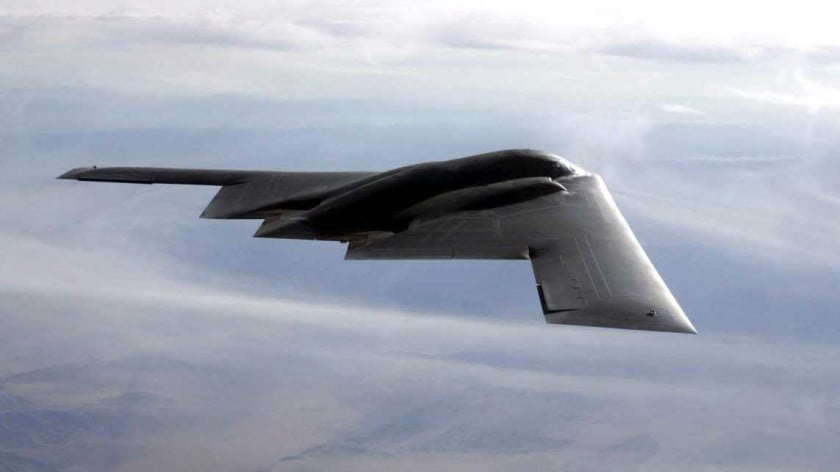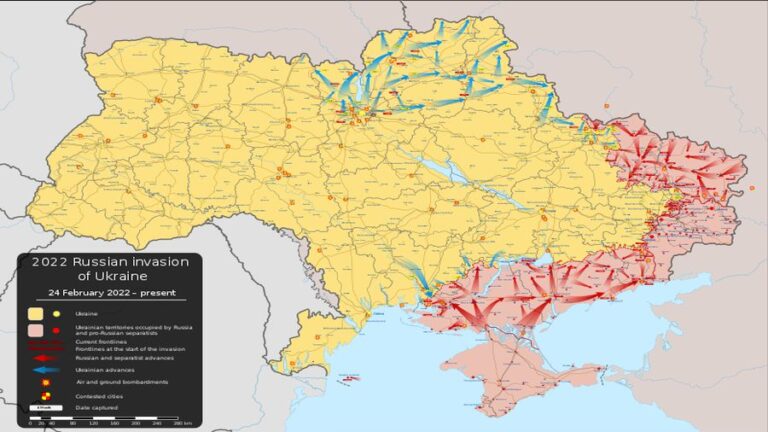Washington’s Backfiring Bombing
Wikipedia tells us that “The Times Square Ball is a… prominent part of a New Year’s Eve celebration commonly referred to as the ball drop, where the ball descends 43 metres in 60 seconds… to signal the start of the new year.” It’s one of these silly things that is quite appealing in the spirit of the Christmas-New Year season, and most of us have a chuckle and consider ourselves slightly foolish for enjoying it.
But there was another and less amusing ball-drop on New Year’s Day, involving a tweet from US Strategic Forces Command or Stratcom, which declares it “deters strategic attack and employs forces, as directed, to guarantee the security of our nation and our allies” In the gobbledegook language of the military it, amongst other things “deters catastrophic actions from adversaries and poses an immediate threat to any actor who questions US resolve by demonstrating our capabilities.”
According to Stars and Stripes, the Stratcom tweet read “Times Square tradition rings in the New Year by dropping the big ball… if ever needed, we are ready to drop something much, much bigger.” As greetings go, you couldn’t get much more crass, confrontational and puerile than that.
The Washington Post noted that an embedded video “showed footage of a B-2 stealth bomber. As the words STEALTH, READY and LETHAL flashed across the screen, the aircraft released bombs. They fall to the ground and crash with a fiery explosion.” Just another video game, really.
The tweet was withdrawn with the apology that it “was in poor taste & does not reflect our values” but it is obvious that the original message is the one that Stratcom, the US Air Force and Washington as a whole want to send : their “values” include being “ready to drop something much, much bigger” on targets all round the world, and they’ve been blitzing with depressing frequency for many years. A month before the big ball bomb tweet Reuters reported that “At least 30 Afghan civilians were killed in US air strikes in the Afghan province of Helmand, officials and residents of the area said on Wednesday [November 28], the latest casualties from a surge in air operations aimed at driving the Taliban into talks.”
Of course the Taliban will never be driven into talks by bombing. In 2018 they were blitzed at the highest rate in all the seventeen years that the US and its allies have been rocketing and bombing and generally blasting all over the country. It’s impossible for us to realise what death and destruction has been caused by the 5,213 bombs that slammed explosively onto Afghanistan in the period January to September last year, but one outcome is made fairly clear by a Forbes’ report that “the UN announced that the number of civilian casualties in the first nine months of 2018 is higher than in any year since it started documenting them in 2009.” And it is apparent that Washington’s war aim has not been assisted in any way by its bombing surge.
One of the most over-used clichés is “history repeats itself” — but it’s difficult to refrain from using it, when one compares the US defeat in Vietnam to the present situation in Afghanistan.
As recounted by The Diplomat two years ago, “A new survey on the use of aerial bombing during the Vietnam War has seemingly confirmed what many suspected: the systematic bombing of South Vietnam detracted from, rather than furthered, US war aims… and in fact contributed to the instability of the South Vietnamese government.”
The parallels with 2019 Afghanistan are sadly unmistakable.
Exactly a year ago Donald Trump tweeted “Taliban targeted innocent Afghans, brave police in Kabul today. Our thoughts and prayers go to the victims, and first responders. We will not allow the Taliban to win!” Reuters reported him saying that “We don’t want to talk to the Taliban. We’re going to finish what we have to finish, what nobody else has been able to finish, we’re going to be able to do it.”
So 2018 became the Year of the Bombing, and the Taliban, those latter-day Viet Cong, undoubtedly suffered many casualties. Nobody knows how many were killed, and there is no means of estimating the effect that increased numbers of dead Taliban might have on the conduct of the war. What is of more significance, however, is the number of civilians killed, and the effects their deaths have had on Afghan citizens.
All the US-NATO countries involved in Afghanistan, and of course the Afghan government itself, are enormously pleased that the Afghan Air Force is now capable of conducting aerial attacks. Every media release concerned with such operations is redolent with pride that such progress in prowess is being made. The New York Times noted that “the Afghan government increasingly relies on airpower in its fight against a resurgent Taliban” and there is no doubt that many airstrikes are now being carried out by Afghan-piloted aircraft. They are, of course, US aircraft, and thereby lies a little problem.
One important thing to be taken into account is the fact that from the ground the people being blitzed have no idea of the nationality of the person who presses the button that releases the bombs and rockets that are intended to kill enemies of the despatcher but only too often kill civilians who have nothing to do with the conflict.
The problem is exemplified by the BBC’s report about one shambles in 2018, when “The helicopters arrived shortly after midday and sent a rocket hurtling into an area at the back of the crowd where children were sitting. As people began to flee, witnesses said, heavy machine gun fire followed them. It was the latest deadly example of how a ferocious new air campaign against the Taliban has caused a spike in civilian casualties from US and Afghan air operations. This Afghan Air Force attack on 2 April in north-eastern Kunduz province killed at least 36 people and injured 71, the UN says. Although witnesses said Taliban fighters and senior figures were in the crowd, 30 of those killed were children.”
The United Nations estimates that in the first six months of 2018 airstrikes killed 149 civilians and injured 204, a 52 percent increase from the same period last year and “ It is of particular concern that women and children made up more than half of all aerial-attack civilian casualties.”
Of course it is horrifying that all these ordinary people were slaughtered in the most awful manner. And what is not known is the fate of those who were wounded, physically and mentally, in these terrifying attacks. There is no health care in Afghan villages, and children who are maimed stay maimed.
And the Taliban gain influence.
In two of the latest airstrike debacles on December 31 “the Taliban attacked a military convoy… American helicopter gunships arrived and fired rockets at the trucks. A house was also hit during the bombardment. Two civilian men and three women were killed, and 12 others were wounded, including nine women” and “five civilians were killed by an American airstrike during a joint military operation by Afghan and American special forces in Zurmat District.”
If you are a young man who is a member or friend of a family that has been shattered by bombs and rockets in a terrifying attack from the air, are you going to support the government that ordered such slaughter? It doesn’t matter to you that it was a “mistake”. What matters is that you lost people close to you. And it is very likely that you will join the Taliban, whom you consider to be the only people fighting against those who killed members of your family, clan or tribe. These airstrikes are the militants’ best recruiting advertisements.
Washington’s bombing is backfiring.
By Brian Cloughley
Source: Strategic Culture








